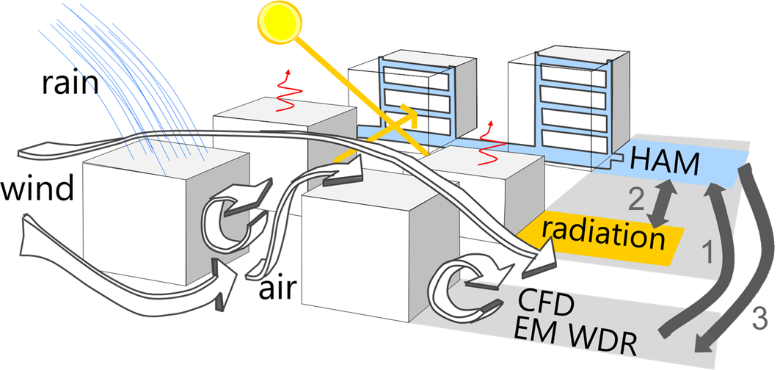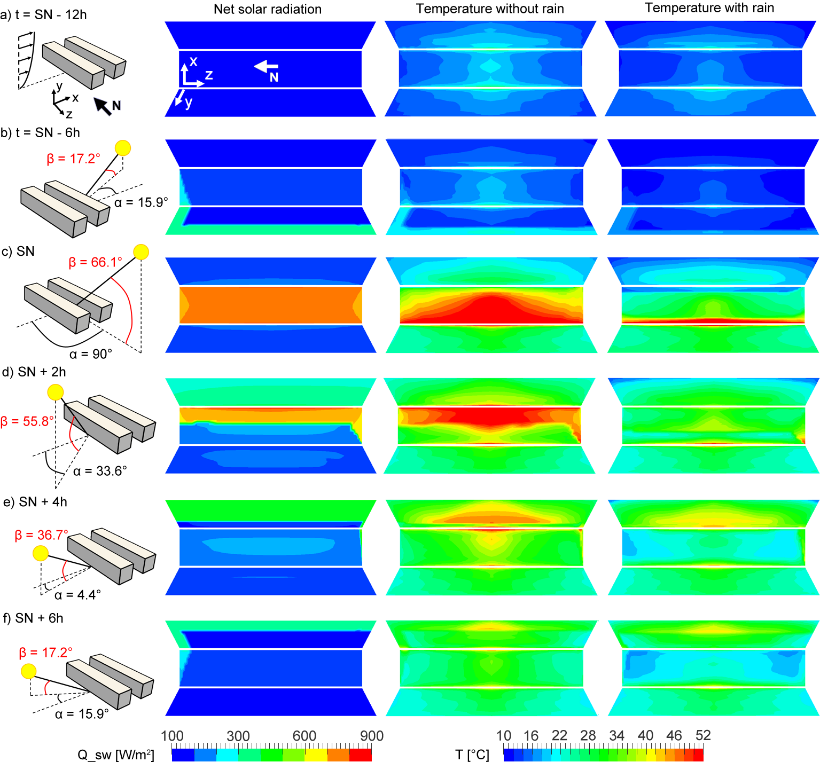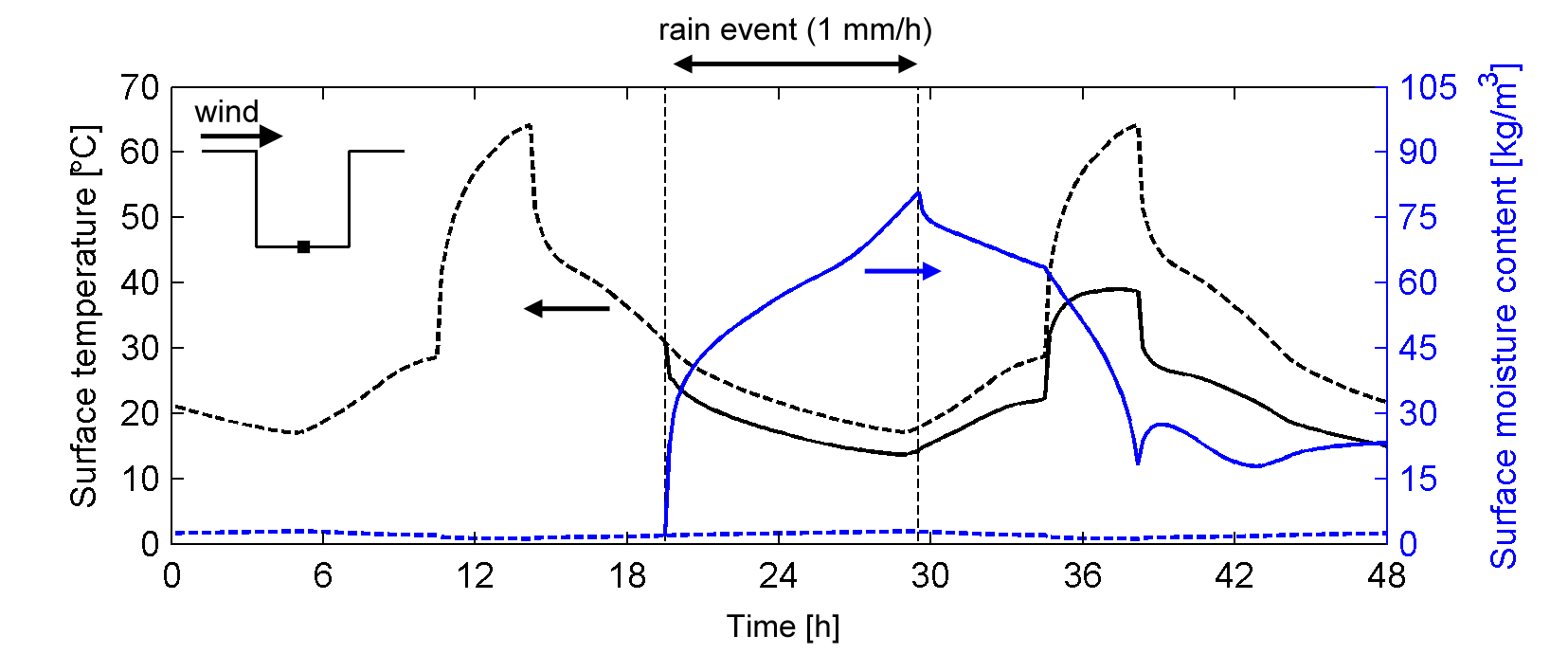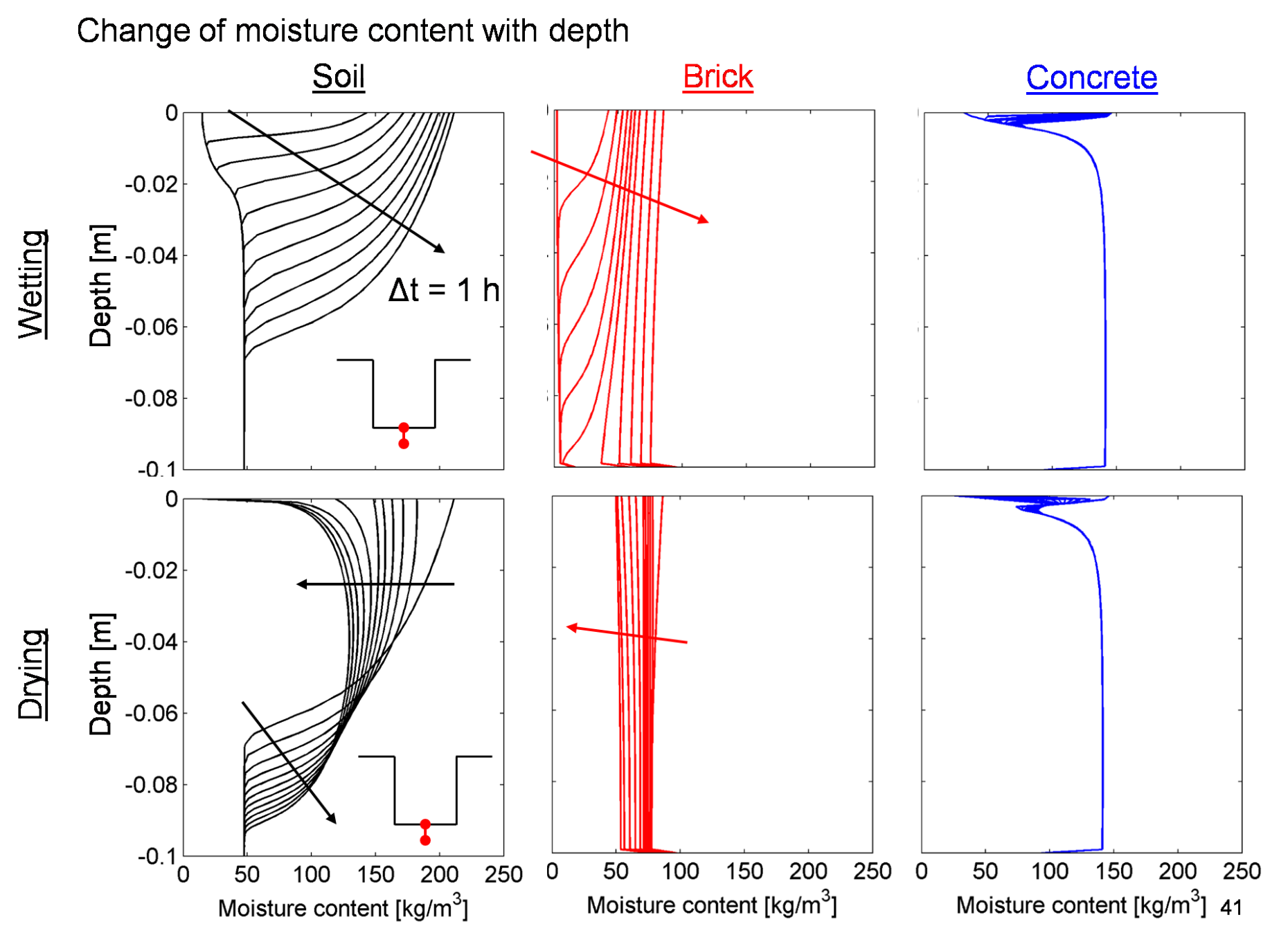Urban microclimate model
A fully-integrated urban microclimate model is proposed consisting of a computational fluid dynamics (CFD) model for wind flow and moisture transport in the air domain, a model for heat and moisture (HAM) transport in urban materials and a solar/thermal radiation model. Three-dimensional coupling between these models allows for the detailed assessment of mitigation strategies for local heat islands and the study of local thermal comfort during heat waves.
The urban microclimate model incorporates:
- Buoyant and forced convective turbulent airflow
- Shortwave and longwave radiation exchange between urban surfaces and sky including multiple reflections
- Convective heat transport at the urban surface
- Heat conduction and storage of heat in the building materials, pavements and soil
- Wind driven rain
- Coupled heat and moisture transport in urban materials, pavements and soil including evaporative cooling
- Evaporative cooling and shadowing by vegetation as porous medium with sink and source terms

The local urban climate model at street canyon scale allows to analyze at high temporal and spatial resolution the physical variables, such as air temperature, air speed, radiant temperature and relative humidity which control local thermal comfort, heat stress and health impact.
Example
We study the impact of wind driven rain and the associated evaporative cooling effect for different pavement materials. Surface temperatures are found to be lower in street canyons exposed to a rain event. Thermal and moisture properties of the pavement material play an important role in the wetting and drying behavior of the pavements and the resulting decrease in air temperature due to evaporative cooling.

Publications
Kubilay A, Derome D, Carmeliet J. Coupling of physical phenomena in urban microclimate: a model integrating air flow, wind-driven rain, solar radiation and transport in building materials. Submitted for publication in Urban Climate (invited Paper).
Kubilay A, Derome D, Carmeliet J. 2016. Influences of wind-driven rain and radiation on urban microclimate. In Central European Symposium on Building Physics CESBP 2016, September 14-16, Dresden, Germany.
Kubilay A, Derome D, Carmeliet J. 2016. Urban microclimate model using a coupled approach for CFD, radiation, wind-driven rain and transport in building materials. In 4th International Conference on Countermeasures to Urban Heat Island, May 30-31 and June 1, Singapore.


